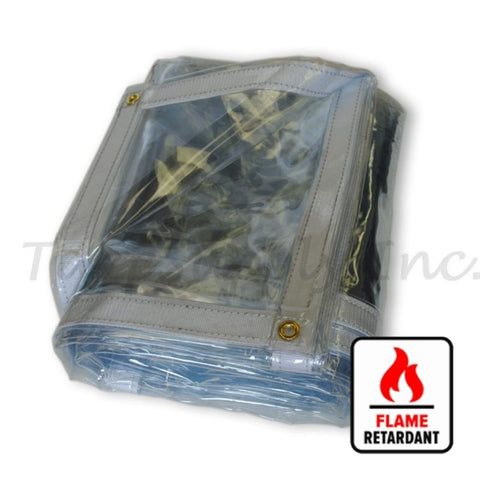What is a Tarpaulin Greenhouse?
A tarpaulin greenhouse is a structure designed to optimize plant growth and protect crops from the elements, using tarpaulin— a flexible, waterproof material— as its primary covering. This type of greenhouse is favored for its affordability and ease of assembly, making it a popular choice among hobbyists and commercial farmers alike.
Benefits of Using Tarpaulin in Greenhouse Construction

Tarpaulin is not only cost-effective but also highly durable, offering excellent protection against UV rays, rain, and wind. Its versatility allows for quick setup and modification, catering to a variety of shapes and sizes. Additionally, the light-transmissive properties of certain tarpaulins can be ideal for plant growth, providing a controlled environment that can be adjusted as per seasonal requirements.
Choosing the Right Tarpaulin for Your Greenhouse
Types of Tarpaulin Materials
Tarpaulins used in greenhouse construction come in various materials, including polyethylene, PVC, clear spring-reinforced poly tarps, and clear vinyl PVC tarps. Each type offers different levels of durability, light transmission, and thermal insulation. Selecting the right material depends on the specific needs of the plants being cultivated and the climatic conditions of the area.
Factors to Consider When Selecting a Tarpaulin
When choosing a tarpaulin for your greenhouse, consider factors such as UV resistance, waterproofing, and durability against wear and tear. The color and thickness of the tarpaulin also play a crucial role in determining the amount of sunlight that reaches the plants, affecting their growth patterns and health.
Recommended Tarps for Greenhouses from Tarp Supply Inc.
Heavy Duty White Poly Tarps

Heavy Duty Clear PVC Vinyl Tarps

Heavy Duty Silver/Black Poly Tarps

Heavy Duty Silver Poly Tarps

Heavy Duty Green/Silver Poly Tarps

Blue Poly Tarps

Step-by-Step Guide to Building a Tarpaulin Greenhouse

Tools and Materials Needed
To build a tarpaulin greenhouse, you will need basic construction tools such as a hammer, nails, screwdriver, and measuring tape. Materials include PVC pipes or metal rods for the frame, tarpaulin sheets, and cable ties or clips to secure the covering.
Constructing the Frame
The frame of the greenhouse can be constructed using PVC pipes or metal rods, formed into arches that provide support for the tarpaulin cover. The frame should be sturdy enough to withstand weather conditions and support the weight of the tarpaulin.
Installing the Tarpaulin Cover
Once the frame is in place, the tarpaulin cover can be draped over it. Secure the tarpaulin to the frame using cable ties, clips, or ropes, ensuring there are no gaps or loose ends. Proper installation is critical to withstand environmental factors and to maintain the internal climate of the greenhouse.
Maintenance Tips for Tarpaulin Greenhouses
Cleaning and Caring for Tarpaulin
Regular cleaning of the tarpaulin is necessary to prevent algae growth and to ensure maximum light penetration. Wash the tarpaulin with mild detergent and water, and check regularly for any signs of wear or damage.
Repairing Tears and Damage
In case of tears or punctures, repair the tarpaulin immediately to prevent further damage and exposure to external conditions. Patch kits or tape specifically designed for tarpaulin can be used to ensure a waterproof and durable repair.
Advanced Uses of Tarpaulin Greenhouses

Adapting Tarpaulin Greenhouses for Different Climates
Tarpaulin greenhouses can be adapted for various climatic conditions by modifying the thickness or type of tarpaulin used. In colder climates, thicker tarpaulins with better thermal insulation are ideal, while in warmer regions, lighter tarpaulins may suffice.
Innovative Designs and Customizations
Tarpaulin greenhouses offer flexibility in design and can be customized to include ventilation windows, side openings, and even automated systems for temperature and humidity control, making them suitable for a wide range of agricultural needs.
Conclusion: Maximizing the Benefits of Your Tarpaulin Greenhouse
Summary of Key Points
Tarpaulin greenhouses are an affordable, versatile, and effective solution for optimizing agricultural production. They offer crop protection, flexibility in design, and adaptability to different environmental conditions.
It represents a dynamic and evolving solution in the realm of modern agriculture. They adapt easily to various geographical and climatic conditions, bring forth advancements in sustainable materials and digital technologies, and offer a practical solution for increasing global food production in a sustainable manner. As we look towards the future, the role of tarpaulin greenhouses in agriculture is set to become even more significant, making it an exciting time for farmers, innovators, and consumers alike.
By embracing these advancements and continuing to innovate, the agricultural community can ensure that tarpaulin greenhouses remain a cornerstone of efficient and sustainable farming for generations to come.





